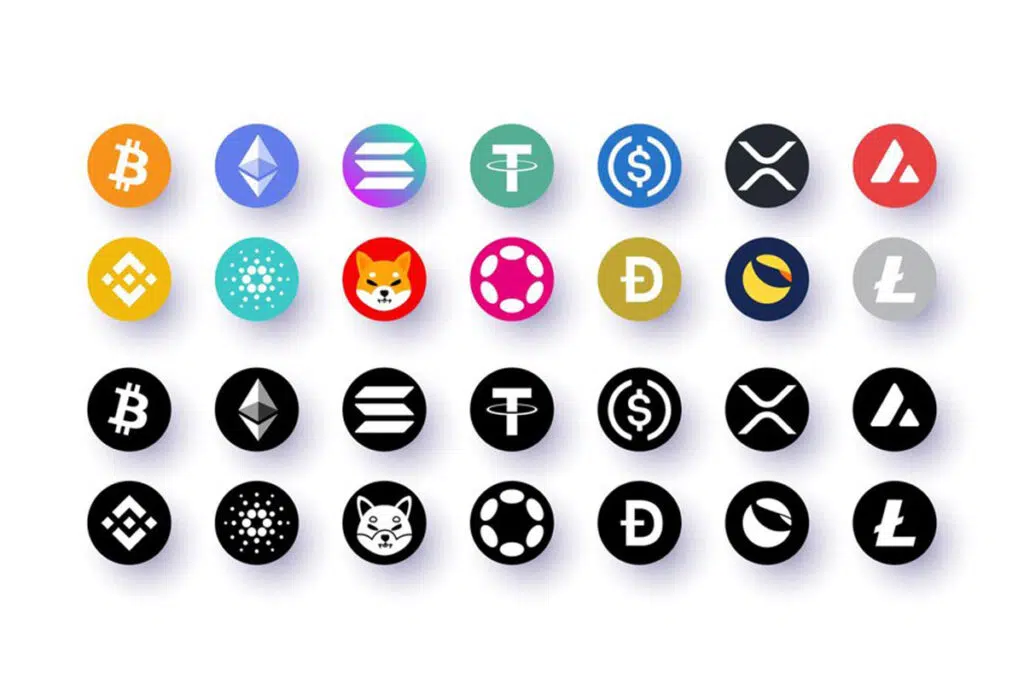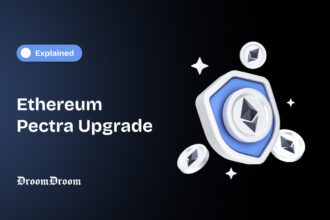Altcoins are developed with the intention of providing an improved version of the existing cryptocurrency like Bitcoin. Ethereum, ripple, litecoin, and tether are some well-known altcoins in the crypto community. However, there are more than 5000 coins available in the global crypto market. Plus, new coins keep on emerging every now and then.
An altcoin is a cryptocurrency created as an alternative to Bitcoin and can be a great choice for those starting out as crypto traders looking to diversify their crypto portfolios. However, they are highly volatile as well as risky. Therefore, educate yourself on what exactly an altcoin is before making an investment decision.
What is an Altcoin?

The term “altcoins” is an acronym for “alternative currencies”, which means any coin that is not Bitcoin comes under the umbrella of an “altcoin.” Thus, altcoins make up a vast portion of the global crypto market cap.
The first altcoin was released in April 2011, called Namecoin. Built using Bitcoin code with the purpose to improve internet security as well as privacy issues faced by Bitcoin. In the initial period, Namecoin was the only alternative available to compete with Bitcoin in the crypto market. But, now the crypto market is swarming with hundreds and thousands of different altcoins, each created to perform its own distinct functions.
4️⃣(B)
They generally project themselves as better replacements for #Bitcoin
Most #altcoins are trying to target any perceived drawbacks that Bitcoin has and come up with competitive
advantages in newer versions.
— Crypto Patel (@CryptoPatel) May 6, 2022The legitimacy, as well as the quality of these currencies, differ from one another where some are able to create a large active user base successfully. While, others fail to do so, thus, earning the label of “shitcoin.”
Thus, if you are considering investing in altcoins, doing thorough market research about different coins available in the market and their market evaluation as well as up-to-date advancements and changes in the crypto market is vital for making a profitable investment.
Types of Altcoins
- Platform Tokens:
Specific blockchain technologies let its users create their own projects, applications, and tokens on its platform. Some, also enable to build of an interoperable blockchain.
In simple words, the certain platform offers their own token through which the users can operate on that platform. Ether (ETH), Cardano (ADA), Polygon (MATIC), Solana (SOL), Chainlink (LINK), Quant (QNT), Algorand (ALGO), Ethereum Classic (ETC), NEAR Protocol (NEAR) and Cosmos (ATOM) are an example of some of the most prevalent platform tokens.
- DeFi coins:
DeFi projects are producing more of their own token for governance, staking, and profit-sharing. Holding Defi coins allows its user to decide the fate of project development through a voting system.
Wherein the suggestion with the highest vote will be implemented. Some e.g. of profitable DeFi coins to invest in are DAI, Uniswap (UNI), Avalanche (AVAX), Tezos, and Maker.
- Stablecoin:
Stablecoins are pegged to a reference asset which includes any fiat currencies, exchange-traded commodities as well as cryptocurrencies with the aim to have a considerately stable price currency. Some popular stablecoins are Tether USDT, DAI, USD Coin(USDC), Pax Dollar (USDP), TrueUSD (TUSD), and Binance USD(BUSD).
- Mining-based altcoins:
This altcoin relies on the mining process to produce new coins as well as validate the transaction and allows the overall number of coins in circulation to increase successively over time.
The miners receive cryptocurrency incentives as a form of payment for their services. Some of the most profitable altcoins to mine are Ravecoin, Helium (HNT), Kadena, Grin, ZENCash, and Metaverse (ETP).
- Staking-based altcoins:
These altcoins rely on the staking process to produce new coins for the network as well as act as transaction verification.
Owners of such currencies can stake them meaning they agree to put them to use in the transaction process. Blockchain technology chooses a user and gives that user the task of validating a block of transactions.
Ethereum the world’s second most popular currency, is an example of staking-based altcoins. Ethereum has transited from ETH 1.0, which uses proof of work, to ETH 2.0, which introduces proof of stake as its consensus mechanism. Some of the other staking coins you can purchase are BitDOA (BIT), Polkadot (DOT), Tezos (XTZ), and Polygon (MATIC).
- Security Tokens:
Security tokens are produced through the tokenization process which involves converting an asset’s value into tokens, that later can be given to investors. Governments or businesses can issue these security tokens that serve the same purpose as bonds, stocks, or other equities.
The Securities and Exchange Commission is responsible for managing security tokens. The top security tokens to invest in includes AlphaPoint, Swarm, tZERO, INX, ADDX, and NXchange.
- Governance Tokens:
In governance tokens, projects there isn’t just one entity with the power to make crucial decisions instead all the owner of the tokens gets the right to vote on cryptocurrency-related initiatives as well as submit recommendations.
These coins have the potential to grow into a truly decentralized project where every member has an equal right to say. Some of the top governance tokens to include in your portfolio are AAVE, MakerDAO, Uniswap, PancakeSwap, and eCash.
- Utility tokens:
Users use utility tokens to access special features offered within a blockchain network. For example, these tokens can cover network fees, pay for services or get incentives as rewards. Basic Attention Token (BAT), Golem (GNT), ApeCoin, and IMPT are top utility tokens to purchase with a high market cap according to coinmarketcap.
- Play-to-earn tokens:
Play-to-earn is a free gaming platform where players have to complete missions or activities in order to earn crypto assets or NFTs as rewards. The reward earned can, later on, be sold in the crypto market. Some examples of play-to-earn games are Axie Infinity, The Sandbox, and Decentraland.
- Meme Coin:
Meme coins as the name suggest, are parodies or interpretations of popular cryptocurrencies. Meme coins can generate quick profits, but they also carry a high level of risk and some have little or no value. The most popular meme coins include Dogecoin, and Shiba Inu.
According to Coinmarketcap Ethereum is the leading altcoin with a market cap of over $210 billion. Followed by Tether, BNB, and USD Coin with over $79, $48, and $33 billion market cap, respectively. The crypto market is constantly evolving, with new coins being developed and market failures being discarded. Therefore, it is important to keep market valuations up to date.
Pros of Altcoins
- Altcoins were developed with the aim of improving various aspects of existing cryptocurrencies such as Bitcoin. Thus, the shortcomings of the previous currency are eliminated, providing an improved version of the coin.
- There are a wide variety of altcoins available in the global crypto market each with its own distinct features as well as use cases. Hence, investors have various options to choose from, and investing in altcoins helps you diversify your portfolio.
Cons of Altcoins
- Many people have little to no knowledge about altcoins which causes altcoins to have low investment rates which result in relatively thin liquidity.
- It’s challenging to distinguish different altcoins merely by use cases, making sound investment decisions tough for investors.
- Many altcoins fail to survive in the competitive global crypto market, thus sinking investors’ money.
Conclusion
Although altcoins are a great entry point into the crypto market, they can become a target for scams, are subject to extreme volatility, and carry many risks. Consequently, many do not survive in the market. So, if you are interested in investing in altcoins, remember that altcoins should be a small part of your overall portfolio. It helps to minimize the risk by betting the minimum amount.



















